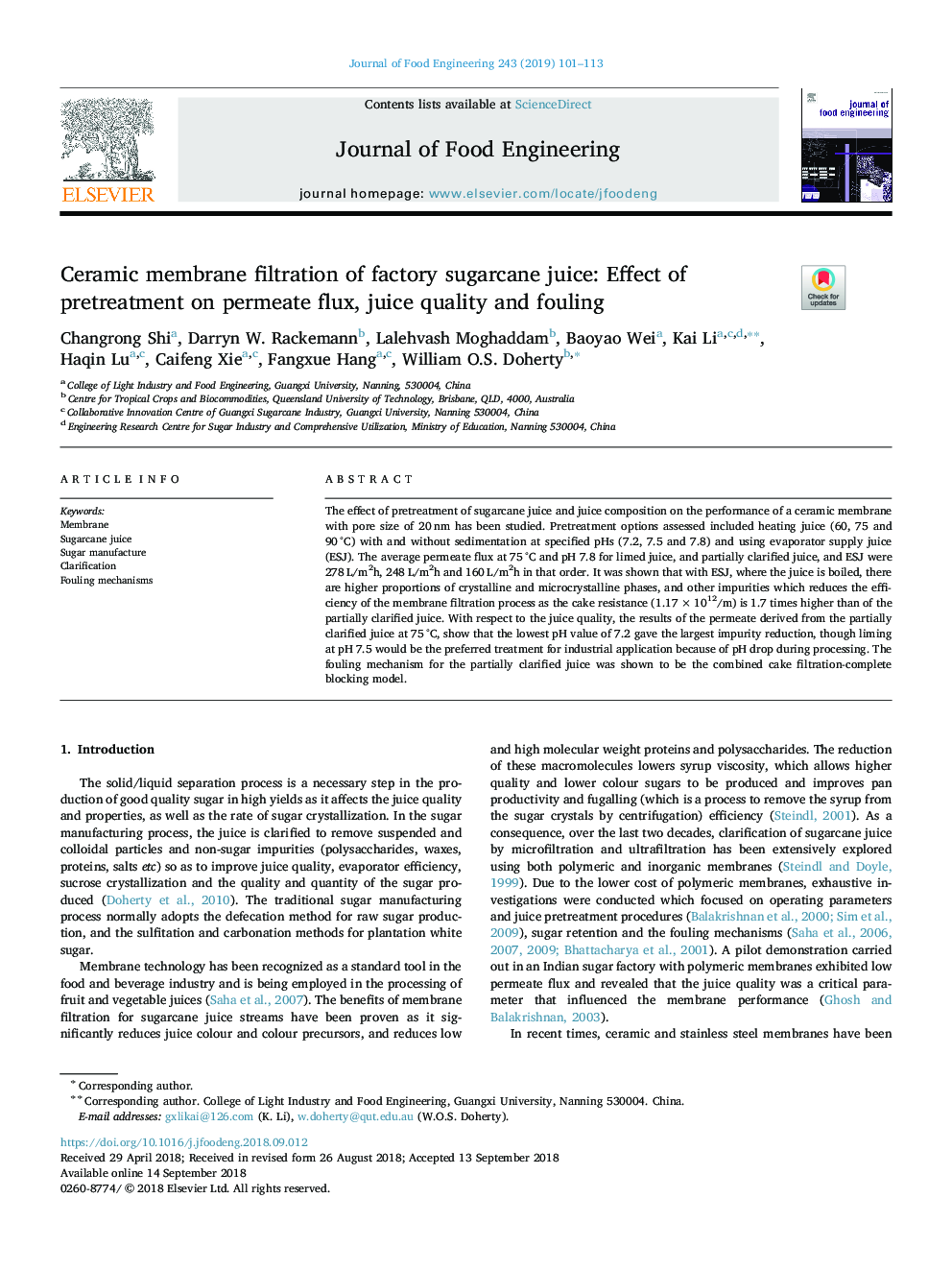| Article ID | Journal | Published Year | Pages | File Type |
|---|---|---|---|---|
| 10145642 | Journal of Food Engineering | 2019 | 13 Pages |
Abstract
The effect of pretreatment of sugarcane juice and juice composition on the performance of a ceramic membrane with pore size of 20â¯nm has been studied. Pretreatment options assessed included heating juice (60, 75 and 90â¯Â°C) with and without sedimentation at specified pHs (7.2, 7.5 and 7.8) and using evaporator supply juice (ESJ). The average permeate flux at 75â¯Â°C and pH 7.8 for limed juice, and partially clarified juice, and ESJ were 278â¯L/m2h, 248â¯L/m2h and 160â¯L/m2h in that order. It was shown that with ESJ, where the juice is boiled, there are higher proportions of crystalline and microcrystalline phases, and other impurities which reduces the efficiency of the membrane filtration process as the cake resistance (1.17â¯Ãâ¯1012/m) is 1.7 times higher than of the partially clarified juice. With respect to the juice quality, the results of the permeate derived from the partially clarified juice at 75â¯Â°C, show that the lowest pH value of 7.2 gave the largest impurity reduction, though liming at pH 7.5 would be the preferred treatment for industrial application because of pH drop during processing. The fouling mechanism for the partially clarified juice was shown to be the combined cake filtration-complete blocking model.
Related Topics
Physical Sciences and Engineering
Chemical Engineering
Chemical Engineering (General)
Authors
Changrong Shi, Darryn W. Rackemann, Lalehvash Moghaddam, Baoyao Wei, Kai Li, Haqin Lu, Caifeng Xie, Fangxue Hang, William O.S. Doherty,
